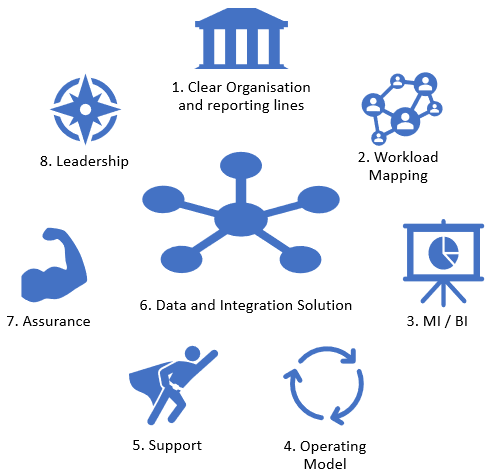Components
There are a number of components to a BIG model.
Firstly, there is collating understanding of the Organisation Structure and Reporting Lines, and how current workstreams and governance arrangements map onto that (Workstream Mapping).
Once clear, the new logical Governance Framework can be outlined, and how each Governance Node within it should work can be defined.
From there, we can review / clarify / update the Operating Models behind the governance needs and indicate Business Support and Assurance implications.
We are not prescriptive about delivery methods or tools used, except in regard to ensuring that the data for governance emerges at the right time with the right quality from them. This means we can run a portfolio that contains programmes, projects, products, workstreams, and service levels - each of which may have different tools and internal processes.
With clear structure, mapping and governance model it will be possible to know who to engage for MI Needs. From the MI needs we can derive a Data Model for management dashboards that support performance management, forecasting and decision making.
We can then prepare the Integration Solution to gather data from our manual data feeds or pre-existing enterprise solutions.
The last component is Leadership. Without the ability to define a vision, develop a roadmap, to inspire change and secure resources / funding, there is no hope of creating the conditions for Business Integrated Governance or inspiring / driving culture change. Leadership is required through the lifecycle of the initiative (including but not limited to the start) and from a level which can coordinate efforts from and across major business functions. This can be broken down into sponsorship (highest level authority for the initiative), direction (setting and driving the strategy for the sponsor), management (coordinating / enabling / achieving).
With these key components, the BIG approach will deliver better strategy outcomes, greater business agility, increased staff motivation, lower management overhead and efficiency benefits.
